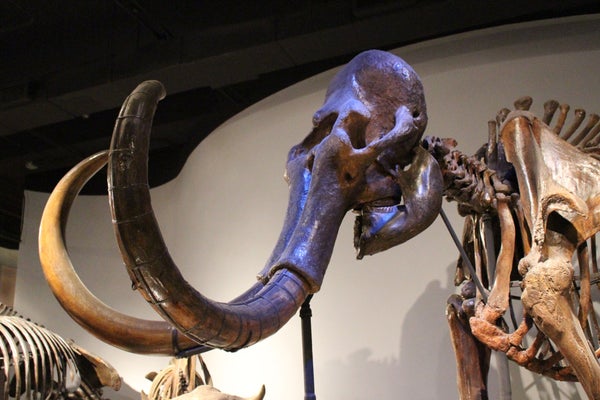This article was published in Scientific American’s former blog network and reflects the views of the author, not necessarily those of Scientific American
On supporting science journalism
If you're enjoying this article, consider supporting our award-winning journalism by subscribing. By purchasing a subscription you are helping to ensure the future of impactful stories about the discoveries and ideas shaping our world today.
The journey of humans out of Africa is one of the most celebrated adventures in the history of life. So much so that a journalist has been on a walking tour to retrace the suspected route humanity took to explore the wider world. But humans were certainly not the only animals to take a great Out of Africa hike. Elephants did, too.
Much like hominins, proboscideans got their start in Africa. Fossils from the Eocene, over 60 million years ago, pin the proto-pachyderms to the continent. These small animals didn’t much look like the elephants we know today, though. Behemoths of modern aspect – the elephantids – evolved in Africa around 7 million years ago, about the same time our ancestors diverged from other apes. And, from fossil finds around the Old World, these elephants apparently had the urge to explore.
A study published last year by paleontologists Rivka Rabinovich and Adrian Lister recounts these early journeys. For elephants, much like humans, there wasn’t a single Out of Africa moment but many journeys involving different species. Around 7 million years ago, the researchers write, the elephant Stegotetrabelodon made it as far as southern Italy. Later, between 3.5 and 3 million years ago, early mammoths showed up in Europe and the forerunners of today’s Asian elephant had arrived in India.
The primary focus of Rabinovich and Lister’s study, however, was a fossil site in Bethlehem. Excavations in the 1930s and further analysis in the 1950s had turned up a tusk, mandibles, molars, and postcranial bones of ancient elephants. Rabinovich and Lister took another look at the collected remains, including specimens not described before, to reassess their identity and what they mean for the spread of fossil elephants around the world.
Working from the preserved molar teeth – often used as the key skeletal piece to determine the identity of ancient elephants – Rabinovich and Lister proposed that the beasts were some form of early mammoth. The dental details appear close to a species called Mammuths subplanifrons from Africa or Mammuthus rumanus from Europe. Yet there may have been more than one type of elephant present. A tusk found at the site, the paleontologists noted, lacks the twisted shape characteristic of mammoths. This is closer to Elephas, and so more than one lineage of elephant may have come to rest in this spot. Other interpretations are possible – perhaps the tusk is from a mammoth that evolved before those distinctive curved tusks became common – but better fossils are needed to be sure.
Here’s where things get a little tricky. The precise age of the Bethlehem site isn’t known. Absolute dating techniques have not worked there. For now, it seems the deposit formed between four and three million years ago. Still, within this window, the bones appear to at least represent an early form of mammoth more archaic than any presently known from Europe. The Bethlehem beasts may be close to mammoths of similar age found in Turkey and Greece, as well, perhaps documenting an early march of mammoths out of Africa and into Eurasia. The map of their journey is still a sketch, but it is at the very least an outline of how these massive mammals began a trip that would spread mammoths across the Northern Hemisphere.
Reference:
Rabinovich, R., Lister, A. 2016. The earliest elephants out of Africa: taxonomy and taphonomy of proboscidean remains from Bethlehem. Quaternary International. doi: 10.1016/j.quaint.2016.07.010
